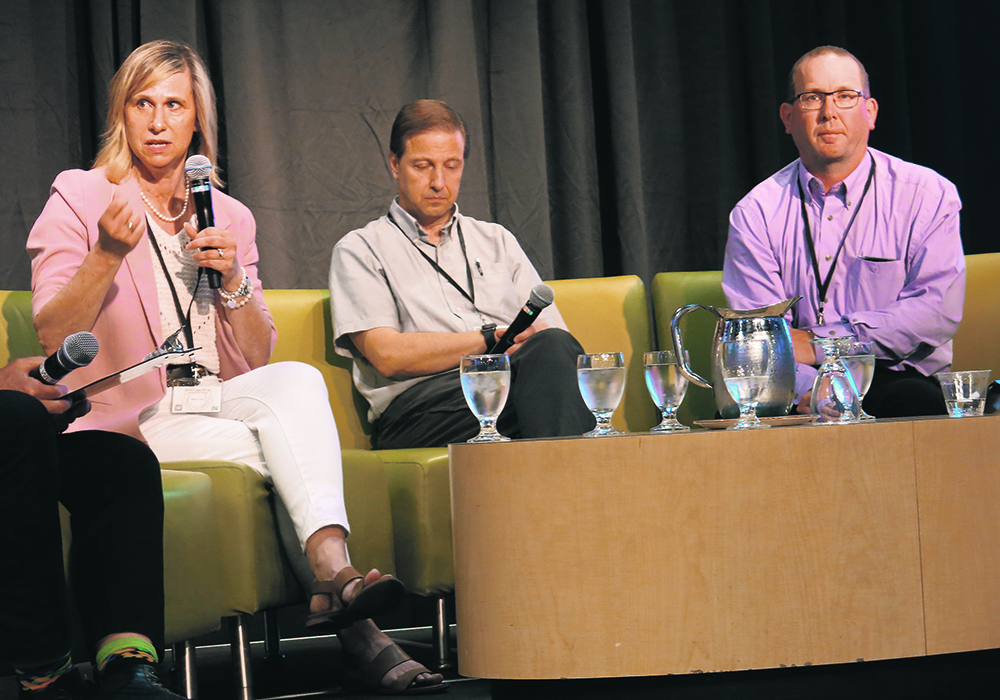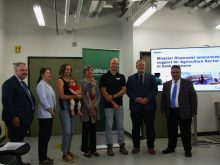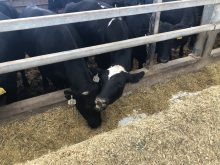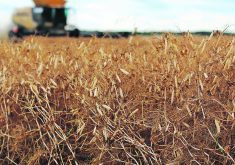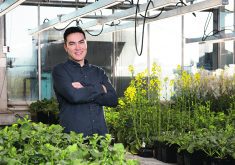Speakers at a recent conference say better communication needed so research gets into the hands of producers
A scientist explaining how to bridge the gap with producers to promote new technologies and practices told a conference the best proposals for agricultural research come from standing in a farmer’s field.
“Those really are where the best ideas come from, but really also the best decisions,” said Nancy Tout, chief scientific officer for the University of Saskatchewan’s Global Institute for Food Security.
Researchers must also be front and centre with producers as part of a wide diversity of voices at the table, she said.
Read Also

Using artificial intelligence in agriculture starts with the right data
Good data is critical as the agriculture sector increasingly adopts new AI technology to drive efficiency, sustainability and trust across all levels of the value chain.
She spoke as part of a panel discussion at the recent Results Driven Agriculture Research (RDAR) Round-Up conference in Calgary. The panel was about “what we’re calling the final mile,” said Lydia Talpash, executive director of operations at RDAR.
“And the importance of the final mile is to make sure that any innovations that are resulting from research truly are making that final mile to the farmgate and are being adopted and moved forward because that’s the outcome we’re truly trying to accomplish with the innovations that are being brought forward.”
There needs to be better communication between all segments of the agriculture industry so that agricultural research gets into the hands of producers, said Mark Redmond, chief executive officer of RDAR. “And in the past, we’ve spoken about the producers, the private sector, the public sector, so one of our goals is to bring together all those groups to work together in a partnership.”
RDAR is an Alberta agency that works with producers to determine the funding priorities for agricultural research. Its second-annual Round-Up, which was held June 8, was attended by more than 250 people ranging from farmers, scientists and engineers to agribusiness leaders.
The emcees were journalist and science communicator Niki Wilson, along with Jay Ingram, former co-host of Discovery Channel’s Daily Planet science show and co-founder of the Beakerhead science, engineering and arts festival in Calgary. Besides Tout, the panel included Dalin Bullock, dean of the School of Life Science and Business at Olds College in Alberta, and fifth generation rancher Sean McGrath of Ranching Systems Ltd.
McGrath said officials often try to get producers to adopt a new technology by explaining it to them instead of listening to them as part of a two-way conversation. It reminded him of an uncle who was one of the few people he knew who read the manual for a new deep freeze before plugging it in.
“They actually do come with a manual,” said McGrath to chuckles from the audience. “Lots of times, we come to producers and we’ll ‘step one, step two,’ and that’s very dry and it doesn’t attract them,” he said.
“There’s no buy-in because it’s just a technology, whereas if we listen to them and engage in the discussion, ‘why do you do what you do, what would be transformational for your business? What do you want your business to look like?’ then their curiosity is piqued.
“And then that will drive the innovation from the end-user point, right? It’s because you’re engaging the creativity of a much larger group to design that research.”
Bullock said the closer agricultural research is to what producers want, the more it will be adopted.
“But I also think it creates greater relevance as well because I think that sometimes that becomes an issue if some research is being done that is not perceived as relevant by the end user, then oftentimes the adoption won’t be as high, for sure.”
Ingram told the panel it sounded like everybody agreed about what should happen.
“And yet apparently, it’s not happening, so why not?”
Tout said it’s occurring but in small pockets.
“There needs to be a larger mindset to accelerate broader adoption that reflects the urgency of issues such as climate change, the need to feed the world’s rising population and the increasing challenges being placed on the agriculture industry by consumers, she said.
McGrath said producers must consider profitability versus cost when switching to a new technology.
“The beef cattle industry is the one I would be most familiar with, and there’s some statistics that show the average net income in the last five years from a 200 head cow-calf operation is $18,000, so a $5,000 investment in a technology is a third of that if it doesn’t work, so there’s a little bit of that fear and reticence,” he said.
Tout said scientists sometimes feel that profitability is a bad word in terms of research proposals.
“It’s absolutely not…. I have to have a big shout out to RDAR because they are starting to bring that in and actually demand that from the research proposals coming in.
“They say, ‘who’s the economist on the team,’ and again, that feels very uncomfortable as a scientist to say, ‘I need to have an economist on the team. I need to do a trial that shows return on investment for the farmer.’ It feels very strange, but that’s where I think we pick a partner and we’ll be able to bring that into the conversation.”


